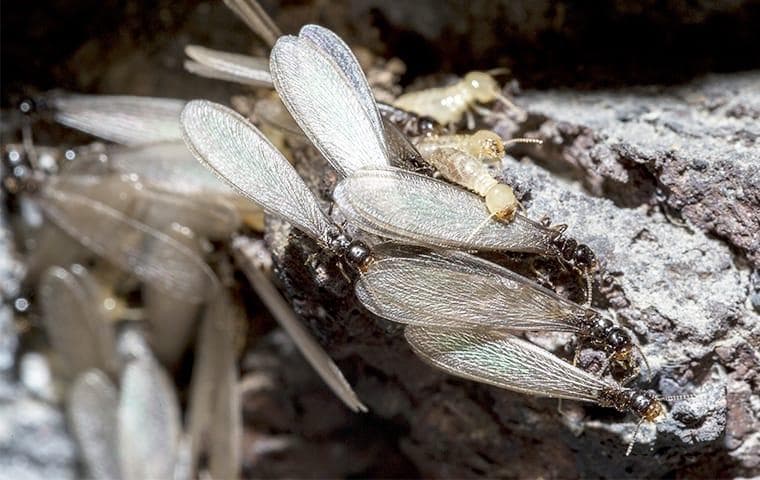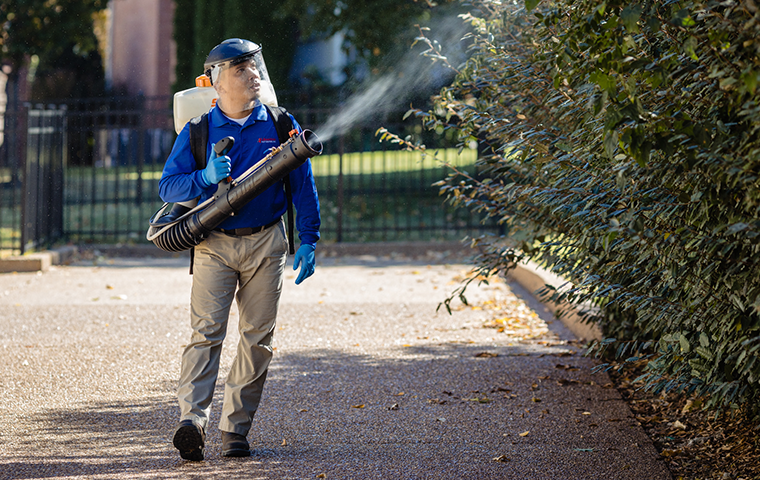If you've ever had the misfortune of dealing with termites, you know that these little critters can cause big problems. But did you know that science can be your strongest ally in this battle? Today, we're diving into proven techniques for effective termite control in Murfreesboro. Not only will you learn how to identify different types of termites, but we'll also explore the science behind their behavior and why they're attracted to your home in the first place. So, whether you're looking to protect your property or are already facing an infestation, this article has got you covered.
How To Identify Termites: Types, Behaviors, And Warning Signs
Understanding the types of termites in Murfreesboro is crucial for anyone who owns property in the area. The more you know, the better you can prepare and act. In this section, we'll cover various species-specific characteristics, delve into termite communication systems, and go over some observable signs that can tip you off to termite presence.
Species-Specific Characteristics
Different termite species in Murfreesboro come with unique challenges and identifying traits. Subterranean termites are generally light in color, ranging from white to beige. They love damp environments and are known for their mud tubes, which are essential for moving between their hidden colonies and their food sources. In contrast, drywood termites are typically darker, often appearing brown. They prefer dry habitats and make their homes directly in wooden structures. Unlike subterranean termites, they leave behind frass, a fine sawdust-like waste, signaling their activity.
Termite Communication Systems
Communication is key for termites to coordinate activities like foraging and building. They use pheromones, specific chemical signals, to communicate a variety of messages to their colony mates. For example, worker termites may release pheromones to guide other workers to a newly discovered food source. This complex system of pheromone-based messages helps them act like a well-orchestrated unit, making their infestations particularly challenging to combat.
Observable Signs And The Science Behind Them
If you want to catch termite activity early, vigilance is your best friend. Here are some tell-tale signs and the science that explains them:
- Mud Tubes: These structures provide termites with a humid and protected environment, essential for their survival.
- Wood Damage: The pattern and extent of wood damage can help you identify the termite species you're dealing with.
- Winged Termites: Seeing winged termites often signals a mature colony that's looking to expand by sending out reproductive swarmers.
- Discarded Wings: If you find these near entrances to your home, it likely means termite swarmers have chosen your property for their next venture.
- Frass (Termite Droppings): These tiny pellets are usually a sign of drywood termite activity.
- Hollowed or Damaged Wood: Termites consume wood from the inside out, leaving a hollow shell behind.
- Bubbling Paint or Wallpaper: Moisture damage from termites can cause paint and wallpaper to bubble.
Pay attention to these signs, and you'll be well on your way to catching termite activity before it escalates.
The Silent Destroyers: Uncovering The Threat Of Active Termites
To truly combat termite infestations, understanding the complexity of these insects is vital. They're not just gnawing away at your home's foundation; they're doing so with remarkable efficiency. Here's a closer look at why active termites deserve immediate and thorough attention.
The Biological Basis For Termite Destruction
Termites aren't just chewing on wood for fun; they rely on it as their primary food source. They consume cellulose, an organic compound found abundantly in wood. What sets them apart is their digestive system, teeming with specialized microorganisms that can break down cellulose into digestible substances. This biological capability turns them into efficient destroyers of wooden structures, from your home's foundation to furniture.
Efficient Colonies: A Mini Ecosystem
A termite colony isn't a mob of insects doing their own thing; it's an organized unit with clear roles:
- Worker Termites: These termites are the backbone of the colony. They forage for food, repair the nest, and even groom other termites. They're the ones causing most of the damage.
- Soldier Termites: Far from ordinary, these termites have oversized mandibles for a reason – defense. They protect the colony from natural enemies, such as ants and predatory insects.
- Reproductive Termites: Also known as alates, these are the future kings and queens preparing to set up new colonies. Their role is crucial for the colony's long-term survival.
Each caste is specialized and indispensable, making the colony a well-oiled machine that's hard to stop once it gets going.
Financial And Structural Impact
Active termites aren't just a biology lesson; they're a pressing financial concern. The damage they can inflict ranges from minor cosmetic issues, such as surface etchings on wooden furniture, to more severe structural complications, like weakened beams and floorboards. Over time, this can translate into substantial repair costs that could easily climb into the thousands of dollars. Plus, if you're planning to sell your home, the presence of termites could serve as a significant deterrent to potential buyers, leading to longer listing periods and possible reduced selling prices.
Protecting Your Property: Effective Termite Prevention Methods
Preventing termites from turning your house into their dining hall is easier said than done. However, it's entirely possible with the right strategies. In this section, we'll share some science-backed termite prevention tips you can incorporate into your daily life.
Natural Repellents: Do They Work?
Natural repellents like orange oil have piqued homeowner interest. While studies show they can disrupt termite activity temporarily, they aren't a fail-safe or permanent fix. Consistency and higher concentrations are often needed, making them less practical for long-term prevention.
Building A Termite-Resistant Environment
Let's get into the nitty-gritty of making your home less appealing to termites:
- Moisture Control: A dry environment is your friend. Using a dehumidifier can not only make your home less appealing to termites but can also prevent mold.
- Ventilation: Proper airflow in crawl spaces and attics is a silent hero. It keeps moisture levels low, reducing the termite attraction factor.
- Wood Storage: Termites love woodpiles, so make sure you store firewood and lumber at least 20 feet away from your home.
- Proper Drainage Systems: Ensure your gutters and downspouts are functioning well to direct water away from your home's foundation. A soggy yard is a termite's paradise.
- Seal Entry Points: A tiny crack is a grand entrance for termites. Silicone-based sealants are effective for plugging these up.
- Regular Inspections: A yearly inspection by a qualified professional can spot early signs, saving you money and worry in the long run.
- Landscaping: Keep shrubs and trees at least three feet away from your home. This exposes termite nests and reduces potential food sources.
By focusing on these elements, you're putting up a good fight in keeping your home termite-free.
Mechanical Barriers And Their Effectiveness
Mechanical barriers, such as termite shields on foundation elements or sand barriers around the perimeter, can serve as physical roadblocks for termites. Though not entirely foolproof, they've shown effectiveness in scientific studies and can work in tandem with other preventative measures.
Professional Termite Extermination: Know When To Call In The Experts
You might think you're making progress with store-bought sprays, but termites are incredibly resilient. Let's explore why professional termite control in Murfreesboro is usually your best bet for long-term freedom from these pesky critters.
Expert Techniques And Their Scientific Basis
Professionals show up armed and ready to go to battle with termites. We bring a wealth of specialized knowledge and a range of treatment methods. These are based on the latest scientific findings in termite behavior and physiology. For example, bait systems, such as the Sentricon® System, use slow-acting toxins that worker termites carry back to the colony, thereby eliminating the queen and effectively dismantling the entire colony over time. The Sentricon System will not only eliminate existing termite infestations, but help prevent future ones from occurring.
Why Choose All-American Pest Control?
Looking for science-backed approaches and long-term prevention plans? Termite removal doesn't get any better than with All-American Pest Control. We offer comprehensive services that go beyond mere termite extermination. We investigate the root cause of your termite issue and devise a strategic plan to not just remove the existing problem but to prevent future infestations as well.
In conclusion, tackling a termite problem is rarely as simple as a quick spray of a household product. Professional services offer scientifically backed methods designed for long-term effectiveness. So, when it comes to termite issues, don't take half-measures. Invest in professional services for the comprehensive and long-lasting results you need.
We're Ready To Help
Call Our Office or Complete the Form To Get Your Customized Quote
 1251 Reviews
1251 Reviews








